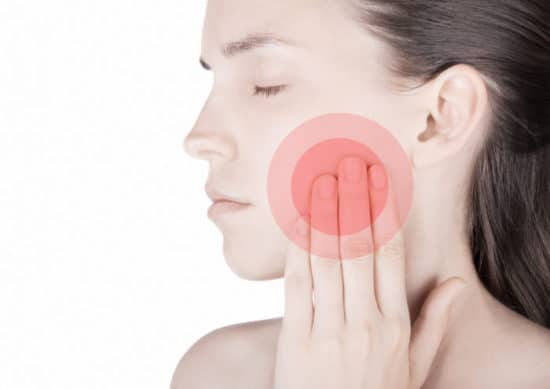TMJ: Temporomandibular joint disorder… What a mouthful!

Do you hear your jaw click when you eat? Do you have pain and stiffness in your jaw, head, or neck? If you answered yes, it’s possible that you may have a temporomandibular joint disorder, also called a TMJ dysfunction or disorder. The TMJ is a made up of the mandible (lower jaw) and the maxilla (upper jaw). It’s responsible for chewing, swallowing, and speaking.
Studies have shown that TMJ is prevalent in 16-50% of the population but only 3-7% of the adult population actually sought care for pain associated with TMJ dysfunction. In addition, there is a much higher incidence reported in females. Female to male ratios range between 2:1 – 8:1. Most patients who present with symptoms are between 20 and 50 years old.
There are multiple reasons that can cause TMJ dysfunction. You could have a chronic pain disorder; bruxism (grinding of the teeth); malocclusion (an inefficient under/overbite); inefficient posture, specifically of the mid-back, head, and neck.
It’s important to report symptoms to a healthcare professional, such as a dentist or physical therapist, who specializes in TMJ dysfunction. This includes: clicking of the jaw, pain or jaw-locking while chewing or opening/closing the mouth, pain or tenderness of your jaw or around your ear, and aching facial pain.
How can Physical Therapy help my TMJ dysfunction?
A physical therapist will perform a comprehensive evaluation. This is an extensive look at your structural alignment and an assessment of your soft tissue/muscle flexibility and joint mobility. Your muscular strength, endurance, and motor control of the surrounding structures will be examined. Your functional movements and daily activities will also be analyzed to determine if they are contributing to the cause of your symptoms.
At Body Harmony Physical Therapy, manual therapy is one approach used to improve the soft tissue flexibility and joint mobility of the jaw, head, and neck, and any other structures of the body that is causing inefficient movement. The physical therapist will work with you to improve your neuromuscular and motor control – to help your muscles work optimally during functional activities. You will also learn how to improve your body’s structural alignment through postural re-education. You will improve your body ergonomics with different functional activities like chewing, sitting at a computer desk, and sleeping at night.
At Body Harmony Physical Therapy, our physical therapists are trained to evaluate and analyze functional movements to identify the primary dysfunction leading to impairments and other limitations in the body.
Written by Jennifer Yong, PT, DPT.
Edited by Keely Faridi, PT







